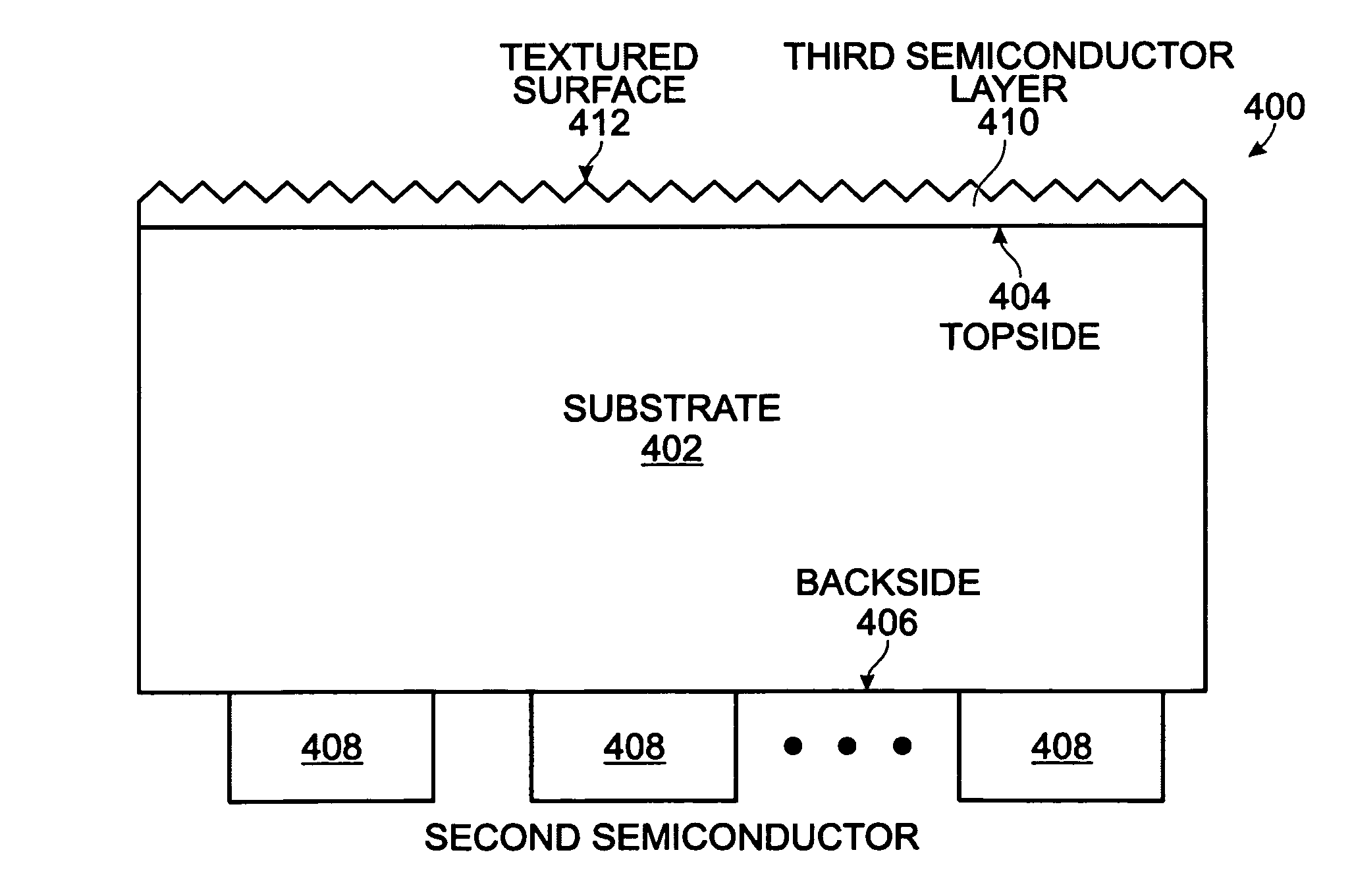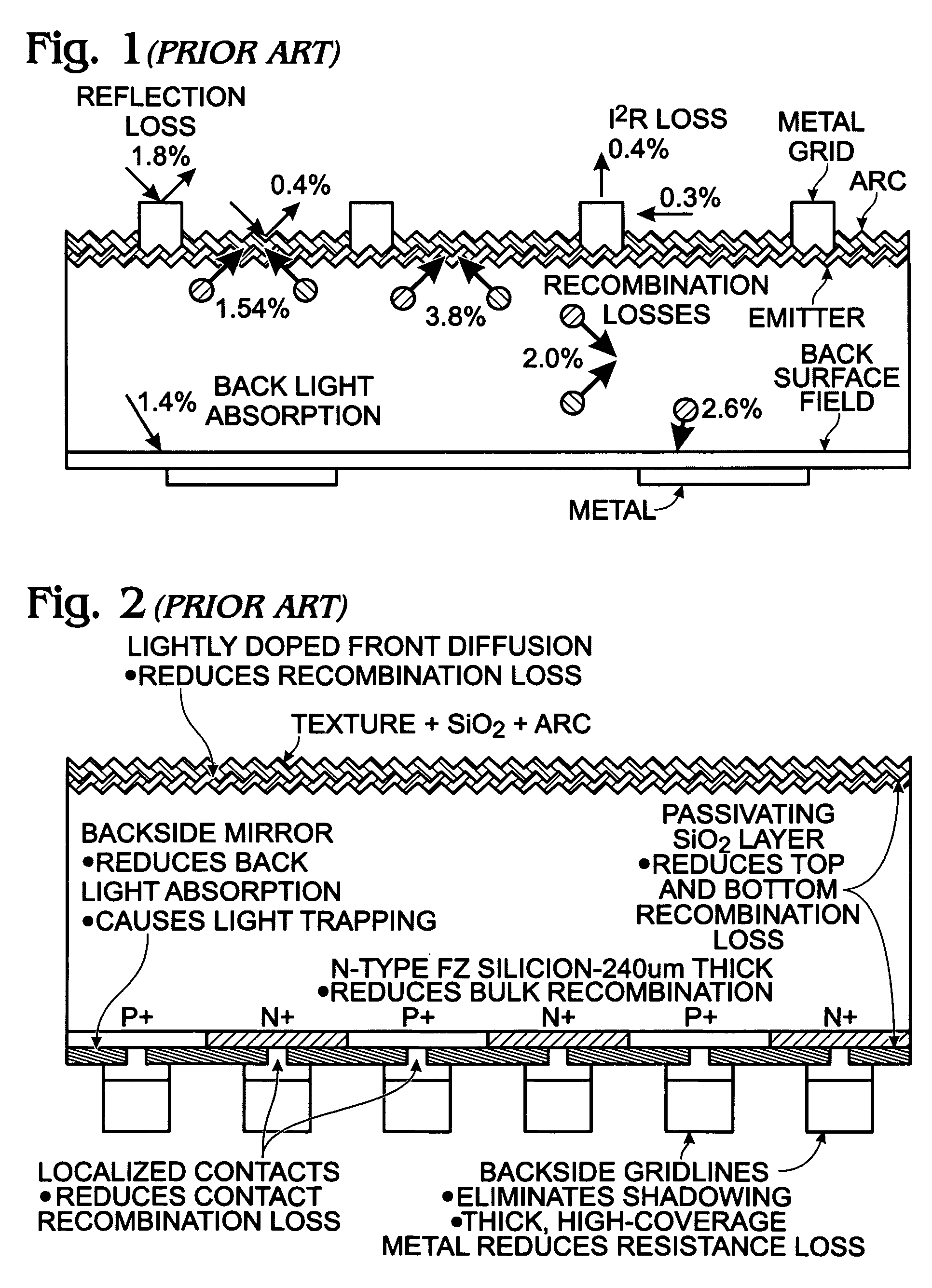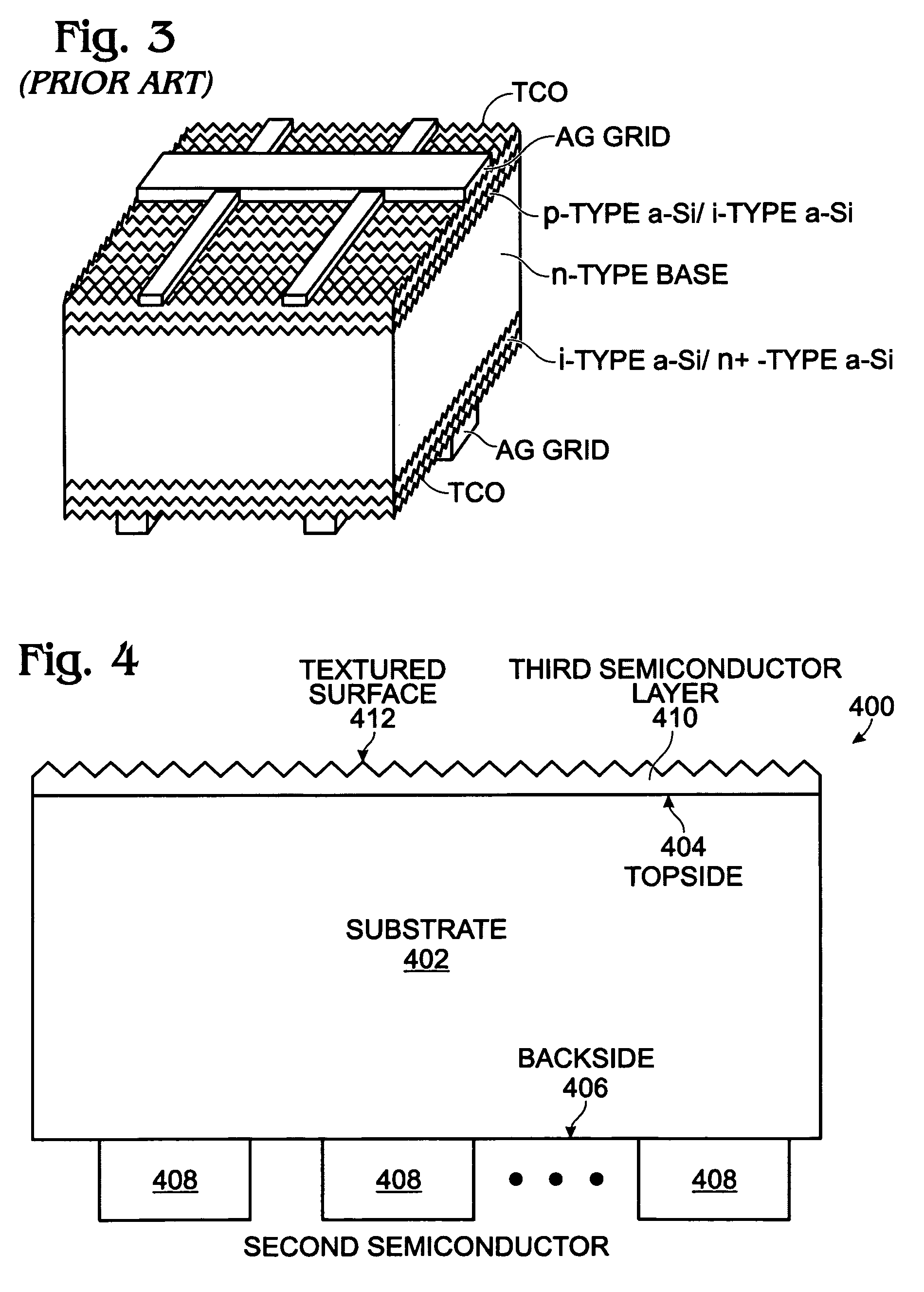Single heterojunction back contact solar cell
a solar cell and back contact technology, applied in the field of single heterojunction back contact solar cells, can solve the problems of high cost of single-crystal bulk silicon fabrication processes, limited cell ar, rear surface recombination loss, etc., and achieve the effect of low manufacturing cost and higher efficiency
- Summary
- Abstract
- Description
- Claims
- Application Information
AI Technical Summary
Benefits of technology
Problems solved by technology
Method used
Image
Examples
Embodiment Construction
[0029]FIG. 4 is a partial cross-sectional view of a back contact single heterojunction solar cell. The solar cell 400 comprises a first semiconductor substrate 402 lightly doped with a first dopant type. The substrate 402 has a topside 404, a backside 406, and a first energy bandgap (associated with the choice of material and the doping). A second semiconductor film 408 overlies a region of the substrate backside 406. The second semiconductor 408 has a second energy bandgap, larger than the first energy bandgap. A third semiconductor layer 410 has a textured top surface 412, overlying the first semiconductor substrate topside, and is moderately doped with the first dopant.
[0030]Either the emitter or the base is formed in the second semiconductor film 408. If the emitter is formed in the second semiconductor layer (as in FIG. 5B), then the base is formed in the substrate. Alternately (as shown in FIG. 5A), if the base is formed in the second semiconductor film 408, the emitter is for...
PUM
 Login to View More
Login to View More Abstract
Description
Claims
Application Information
 Login to View More
Login to View More - R&D
- Intellectual Property
- Life Sciences
- Materials
- Tech Scout
- Unparalleled Data Quality
- Higher Quality Content
- 60% Fewer Hallucinations
Browse by: Latest US Patents, China's latest patents, Technical Efficacy Thesaurus, Application Domain, Technology Topic, Popular Technical Reports.
© 2025 PatSnap. All rights reserved.Legal|Privacy policy|Modern Slavery Act Transparency Statement|Sitemap|About US| Contact US: help@patsnap.com



